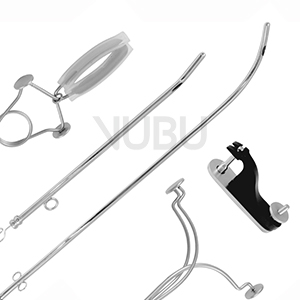Penile clamps and catheters are essential instruments in the treatment of urinary tract issues and other urological conditions. They play a central role in patient care and help alleviate both acute and chronic symptoms.
Penile Clamps: Precise Control of Urine Flow
Penile clamps are primarily used in male patients to control urine flow. They are employed, for example, in cases of urinary retention, a condition where the bladder cannot be fully emptied. Additionally, penile clamps are used after urological procedures to stop bleeding and support the healing process. Their ease of use and effectiveness make them an indispensable tool in clinical practice.
Catheters: Flexible Solutions for Diverse Needs
Catheters are also of great importance, particularly in draining urine from the bladder. They are used for both acute issues, such as urinary retention, and for monitoring urine output during or after surgeries. Modern catheters are available in various diameters and lengths to accommodate the anatomical differences between men and women. Furthermore, there are specialized catheters for long-term or short-term use, enabling individualized and patient-centered treatment.
Innovations and Patient Safety
Continuous advancements in materials and designs have significantly improved the application of catheters and penile clamps in recent years. Today, for example, hydrophilic-coated catheters are available, which facilitate insertion and reduce the risk of injury or infection. The ergonomics of penile clamps have also been optimized to ensure safe and comfortable use.
Conclusion
Penile clamps and catheters are indispensable tools in urological practice. They enable effective treatment of urinary tract problems and significantly contribute to improving patients' quality of life. With the availability of various models and the ongoing development of these instruments, doctors and nursing staff can tailor their approach to the individual needs of each patient, ensuring optimal care.
